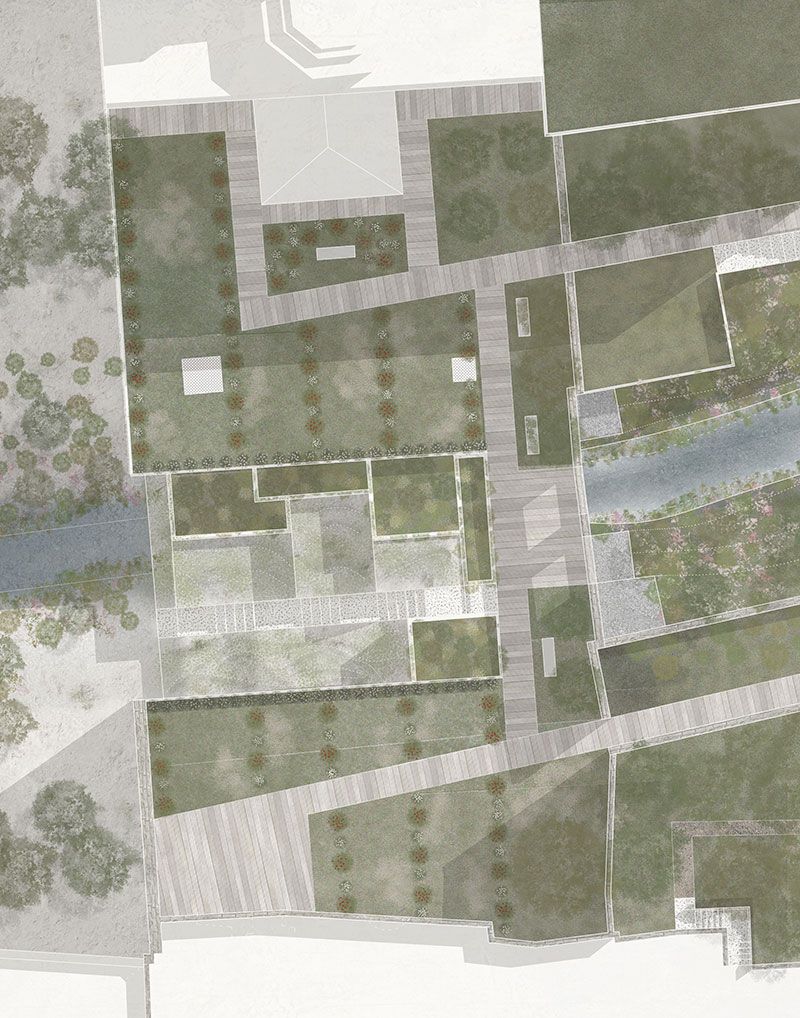Born with the aim of recovering and enhancing the naturalistic and cultural values of the Lama of Santa Margherita in Lamis (adjacent to the Sanctuary of the Madonna di Miracoli), the two-phase design competition – divided into two lots – was announced last year by Barletta-Andria-Trani province.
The program was focused on botanical vegetation recovery of payments left and right, of functional redevelopment of the sports area serving the adjacent school and the redevelopment of the convent green area referred to as the Walled Garden, the cistern and the Rose Grotto.
The winning proposal from the team led by Massimiliano Cafagna (born 1988) – with Clara Bulfoni, Francesca Tita, Luca Colomban, Giulio Bruschi, CG Associates And Maria Strippoli – point to return the Lama to its role as a natural infrastructure and, in the complex territorial system, enhances its identity by increasing the security of the territory.
The project is based on actions of subtraction, implementation and integration of the strongest elementsto give life to a complex landscape, capable of telling its story while opening up, at the same time, to educational and recreational functions.
The elimination of all worthless or unstable artifactsin fact, it allows us to restore legibility to the most significant architectural and arboreal elements, while at the same time freeing up unusual views and surfaces to be used for new functions.
The care of the design underlines the importance of the paths, aimed at ensuring full accessibility from the surface to the lowest levels, enhancing knowledge and inclusiveness. Last but not least, the project acts as a connecting element between the different territorial areas, through rapid movements between the functional areas and slow exploratory immersions in the historical and naturalistic parts.
Water as a central element
At the center of the project is the element of waterchanneled and made safe through local hydraulic arrangement to guarantee geonatural balance and the redevelopment of green spaces.
Through rains gardens and riparian vegetation, the sudden retreat of the watercourse is slowed down, leaving the mark of its passage and, through targeted management, natural infiltration into the soil and outflow towards the bottom of the Blade is foreseen. Alternatively, the creation of a system for the collection, accumulation and reuse of rainwater.
Protection of biodiversity and reduction of the effects of rainfall
The strengthening of the existing vegetation and the inclusion of a contemporary landscape language create a varied and harmonious landscape.
Inspired by the observation of the surrounding natural context, vegetation is implemented in the project to enhance the identifying characteristics. In fact, the choice falls on plant species typical of the Mediterranean climatesuitable to withstand hot and dry summers.
The result is new views, volumes and colors and, in addition to the protection of biodiversity and the easy maintenance of the chosen plants, the reduction of the erosive effects of rainfall will also be guaranteed.






Final ranking
→ competitionawn.it
- 1st place: Massimiliano CAFAGNA • Clara BULFONI • Francesca TITA • Luca COLOMBAN • Giulio BRUSCHI • CG ASSOCIATI SRLS • Maria STRIPPOLI
- 2nd place: Valentina DALLATURCA • Anna MANGIONE • Egizia GASPARINI • Vincenzo PESCATORE • Fabrizio ONETO • Ettore ZAULI • Marcello BRANCUCCI • Paola ODONE
- 3rd place: Aniello D’AGOSTINO • Giovanni Battista GUERRA • Francesco LECIS • Francesco CUCCURULLO • Alfredo ZAMPICININI • Marco D’ELIA
- 4th place: Marco ROSATI • Tiziano D’ANGELO • Domenico MARCHETTI • Rita BOSI
© ALL RIGHTS RESERVED
published on: 04/19/2024
Tags: Water greenery recovery Santa Margherita Lamis blade Massimiliano Cafagnas team wins












